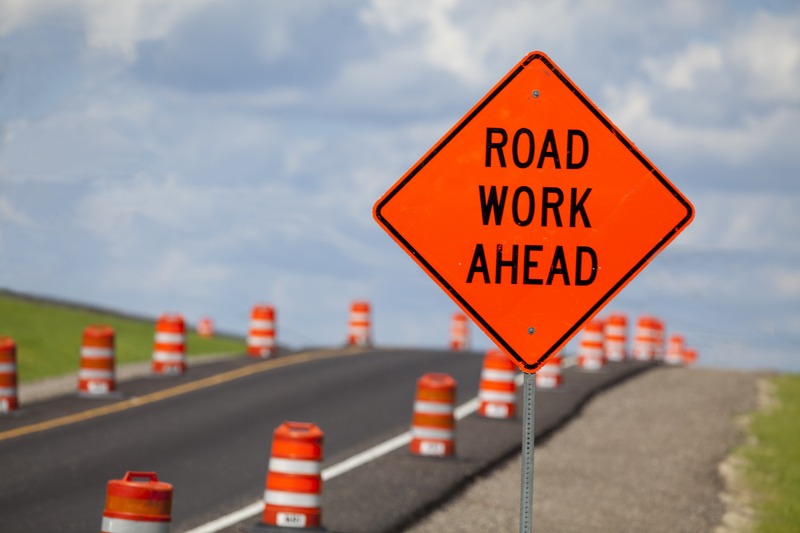Teaching your teen to drive can be both exciting and nerve-wracking. While it’s a significant milestone, it’s also a huge responsibility. One of the biggest challenges for new drivers is learning how to recognize and respond to road hazards—especially in today’s world of increasing delivery trucks, distracted drivers, and unexpected obstacles.

As a parent, you can help your teen build confidence and develop safe driving habits that last a lifetime. Here are five essential tips for teaching your teen driver how to handle road hazards.
1. Emphasize Defensive Driving
Defensive driving is one of the most valuable skills a teen driver can learn. It’s about staying alert, anticipating the actions of other drivers, and being prepared to respond quickly to potential dangers.
Encourage your teen to always:
- Maintain safe following distances: Remind them to use the three-second rule when driving behind other vehicles. Increase the distance during poor weather or in high-traffic areas.
- Scan the road ahead: New drivers often focus solely on what’s right in front of them. Teach your teen to look further down the road to spot stopped vehicles, sudden turns, or other hazards.
- Be cautious around large trucks: Delivery vehicles like Amazon trucks are more common than ever and frequently make abrupt stops. Make sure your teen knows to give trucks extra space and never tailgate.
Defensive driving is about being proactive rather than reactive. By encouraging these habits early on, your teen will be better prepared for unexpected situations.
2. Teach Awareness of Blind Spots
Blind spots are an often-overlooked challenge for new drivers. Delivery trucks, buses, and other large vehicles have particularly large blind spots where smaller cars can disappear from view. Helping your teen understand and avoid these areas is essential for their safety.
Here’s how you can teach this skill:
- Explain where blind spots are located on both standard vehicles and larger trucks. For example, the sides and rear of delivery trucks are the most dangerous areas.
- Practice changing lanes safely by checking mirrors, using signals, and physically turning to check blind spots. Encourage your teen to build this into their routine.
- Remind them to stay visible: Never linger beside or directly behind a truck. If they can’t see the truck’s mirrors, the truck driver likely can’t see them.
As the number of delivery trucks increases in residential neighborhoods, this heightened awareness can help significantly prevent dangerous situations on the road.
3. Practice Managing Sudden Stops and Turns
Delivery trucks and vans are everywhere and often stop or turn with little warning. In neighborhoods with lower speed limits, these stops can happen quickly as drivers make home deliveries. For inexperienced drivers, this can cause confusion or panic.
To help your teen prepare:
- Take them driving in residential neighborhoods during busier times, such as mornings and evenings when delivery traffic is higher.
- Practice stopping quickly and safely, simulating situations where a truck might suddenly block the road or stop ahead. Reinforce the importance of controlled braking without slamming on the brakes.
- Encourage awareness of brake lights and turn signals. If they see a delivery truck pulled partially over, teach them to slow down and anticipate that it may pull back into traffic.
The more real-world experience your teen gains with these situations, the better they’ll handle them confidently and safely.
4. Handling Accidents Involving Delivery Trucks
While we hope our teens never experience a car accident, preparing them for the possibility is essential. With the rise of Amazon delivery trucks and other large vehicles, delivery truck accidents are becoming more common.
Knowing the proper steps to take if your teen ever finds themselves in a collision with a delivery vehicle can make all the difference. Remind your teen that safety is the top priority and that they should:
- Remain calm and check for injuries for themselves, their passengers, and anyone involved.
- Move to safety if possible and turn on hazard lights to warn other drivers.
- Call for help immediately by dialing emergency services.
- Document the accident by taking photos of the scene, the vehicles involved, and any relevant details.
Knowing these steps in advance can help teens (and their parents) stay calm and act responsibly during a stressful situation.
5. Prepare for Other Common Road Hazards
While delivery trucks are a common hazard, teens should know many other dangers. Teaching them how to handle these situations will make them safer, more confident drivers.
Here are some key hazards to address during practice sessions:
- Potholes and uneven roads: Teach your teen to slow down and steer around these hazards without making sudden, dangerous maneuvers.
- Construction zones: Emphasize slowing down, following detour signs, and watching for workers or equipment.
- Pedestrians and cyclists: New drivers often forget to check for pedestrians at crosswalks or watch for cyclists sharing the road. It is key to practice awareness in these situations.
- Distracted drivers: Stress the importance of staying alert for erratic or distracted drivers and keeping their focus on the road at all times.
The more variety of driving experiences your teen gains, the better they’ll be able to adapt to different road challenges.
Conclusion
Teaching your teen driver to handle road hazards isn’t just about passing the driver’s test—it’s about preparing them for real-world situations. By focusing on defensive driving, blind spot awareness, and handling sudden stops, you can help your teen become a confident, safe driver.
Accidents can happen even when we’re careful, but knowing how to respond to them makes all the difference. As parents, we can empower our teens with the skills they need to navigate busy roads safely and responsibly.
With practice, patience, and preparation, your teen will be ready to face any road hazard.



